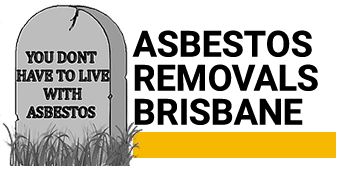

What Does Asbestos Look Like?
Though everyone is well aware of the dangers if asbestos, many are uncertain if their home contains it or how to accurately identify it if they do stumble across it. this is especially concerning for homeowners looking to undertake a DIY renovation project, as it’s all too easy to hammer into a piece of wall that contains the deadly mineral. At Myers Asbestos Removal, we get many people asking ‘what does asbestos look like?’ and ‘what are the chances my home contains it?’ Truthfully, asbestos can be very hard to recognise, but a professional can work out pretty quickly if a building material looks suspicious – usually by where it’s located. To give you an idea about the common problems we face identifying asbestos, we’ve put together some questions in our handy guide below:
What does asbestos look like: How do we identify asbestos?
What does asbestos insulation look like?
Asbestos is virtually undetectable to the naked eye, as its tiny needle like fibres are usually blended with other building materials. In its original form, asbestos looks thick, fluffy and cotton like and can come in colours ranging from white and grey to brown and blue. However, raw asbestos or ‘loose fill asbestos’ is incredibly rare and was only used by a few companies with the most notable being ‘Mr Fluffy.’ This type of loose fill insulation was used in the 60s and 70s and is considered the most dangerous type of asbestos as the loose fibres could easily pass through the roof and a person’s home. Loose asbestos for insulation was predominately used in NSW and ACT, but friable asbestos has been found in pipe lagging, sprayed on fireproofing, and soundproofing in QLD.
What does asbestos sheeting look like?
If you’re wondering ‘what does asbestos sheeting look like?’, the only way you can accurately discern if a fibrous sheeting contains asbestos is to get it tested. On its own, a fibrous sheeting with asbestos poses no risk but problems can occur when it starts to deteriorate. It also poses a significant risk is disturbed by power drills and can cause asbestos fibres to be released into the air. If your home was built prior to 1990, it’s very important you have your property inspected before conducting any renovation work.
What does asbestos dust look like?
What does asbestos dust look like? Asbestos dust is indiscernible from regular dust, but you definitely don’t want to get close enough to conduct an inspection. This is because asbestos is at its most hazardous in dust form, as it can be easily breathed in. asbestos dust can occur from knocked down walls or from deteriorating materials such as switchboards or metal guttering. If asbestos dust is bigger than 10m2, it must only be cleaned up by a licensed asbestos removal professional.
What does asbestos look like under a microscope?
Asbestos can be grouped into two categories – serpentine and amphibole. The most common type of asbestos found ‘Chrysotile’ has tiny, curly fibres. ‘Amosite’ and ‘Crocidolite’ fall under the amphibole category, and contain tiny, straight fibres that are slightly more dangerous than Chrysotile as it attaches to the lung easier.
Asbestos inspection and assessment
Think your home may contain asbestos? Contact Myers Asbestos Removal to request a free quote or call us on 0412 314 588 to have any type of asbestos removed or inspected today.
